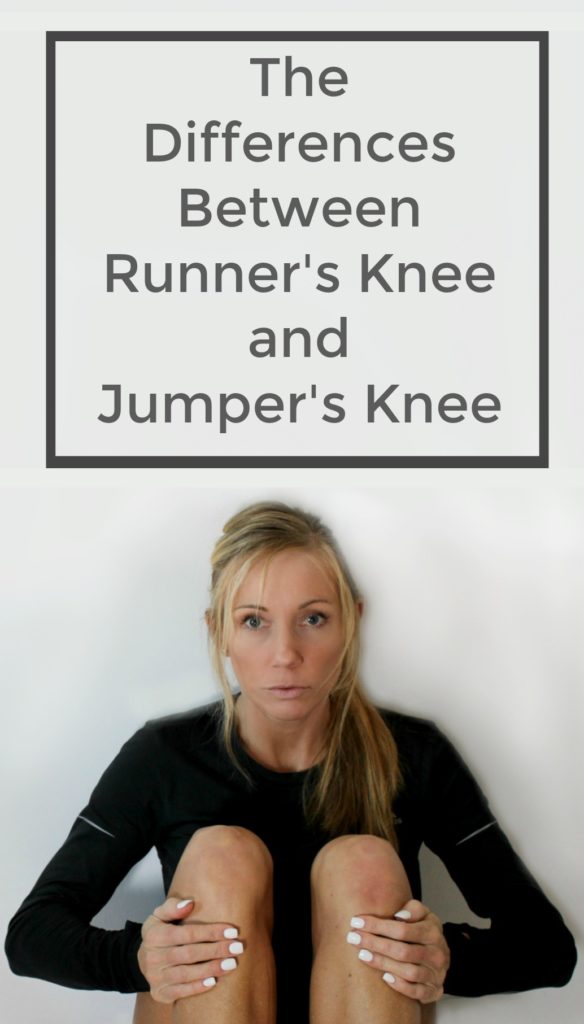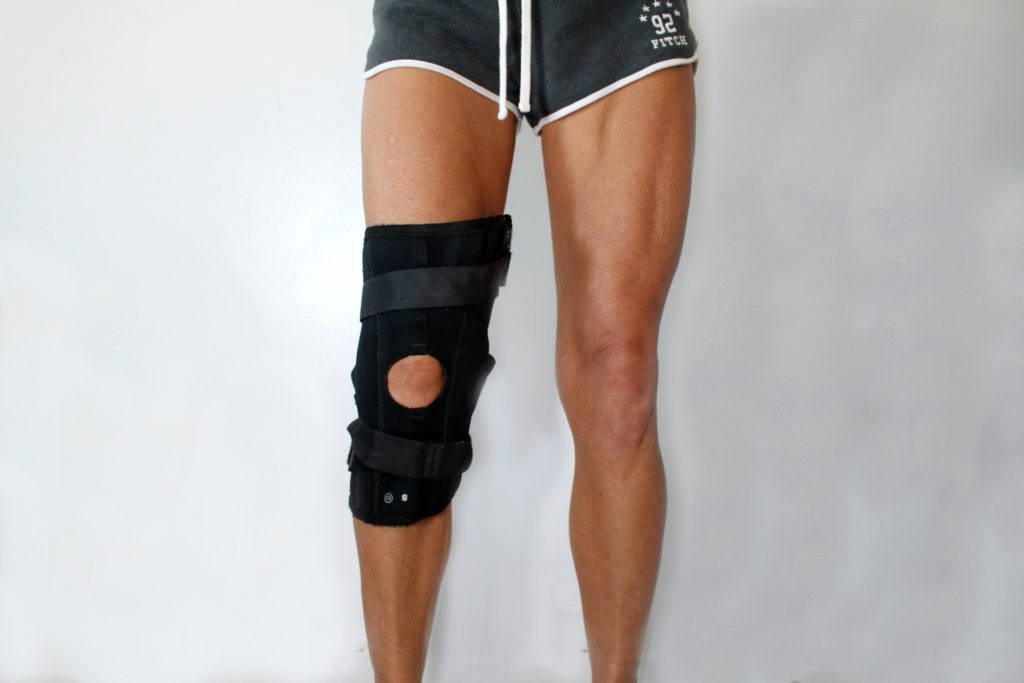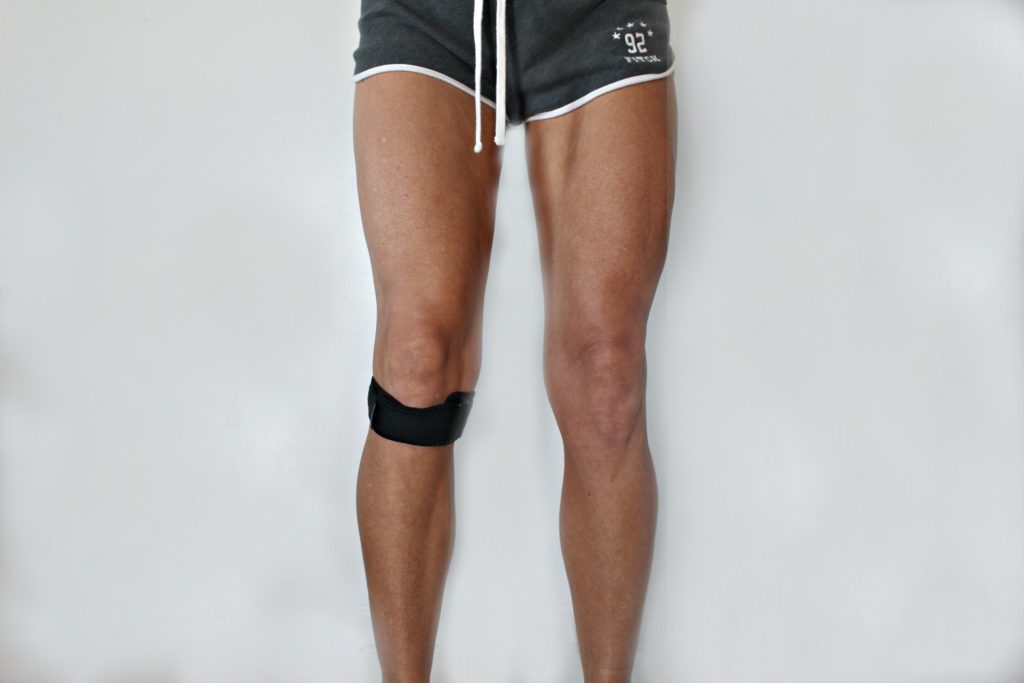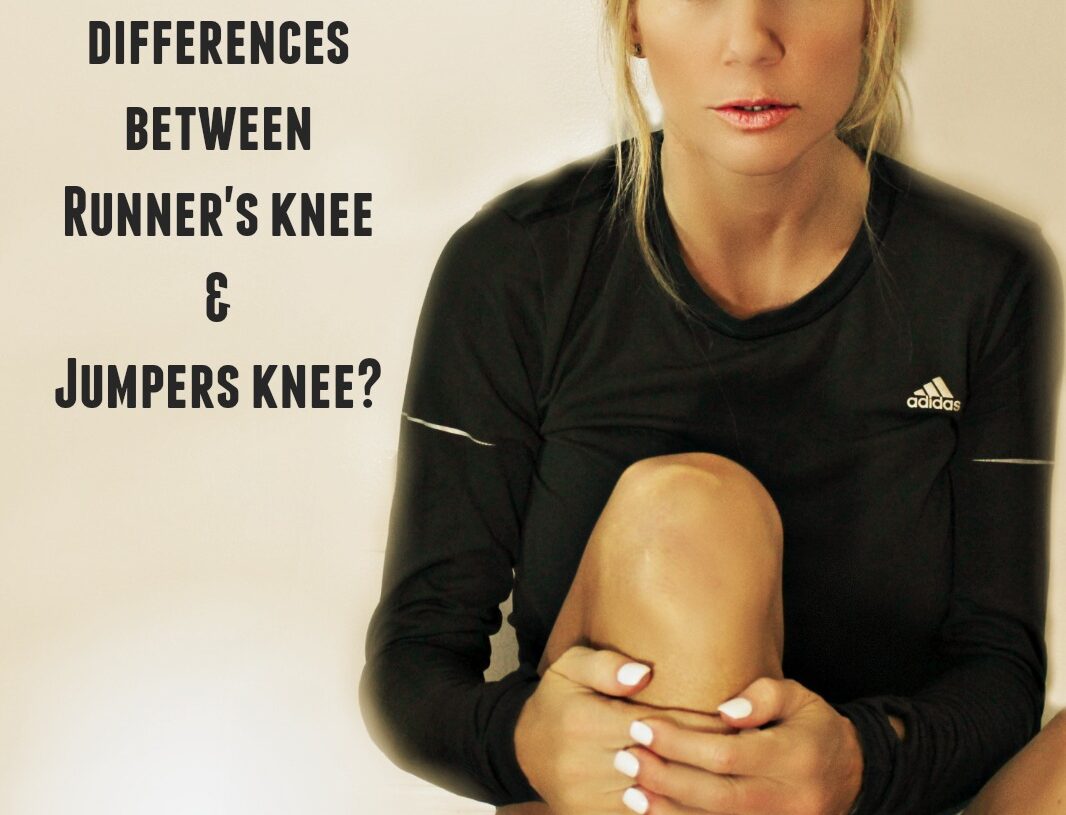I have had my share of sports injuries over my lifetime of working out. Years ago I had runners knee and ended up having surgery on my right knee to clean up the jagged, loose cartilage that I wore down over the years of strenuous exercise and running. Recently my left knee had been bothering me in the lower part of my kneecap and hurt the most when my knee would naturally extend backwards when standing and walking. I took 3 weeks off from my workouts to see if that would relieve the pain, but it only got worse so I went to the doctor. The doctor said that I most likely had Patellofemoral pain syndrome, or runner’s knee, but after researching the symptoms, I am certain that I have Patellar Tendinitis, or Jumper’s Knee, instead. Truly though, they are both quite similar and it may sometimes be difficult to know for certain which one is the correct diagnosis. Here are the similarities and differences between Runner’s Knee and Jumper’s Knee.

Runner’s Knee Symptoms
- Pain in front, behind, or around your kneecap near the top.
- Pain is dull and achy.
- Pain when bending your knee when you walk, squat, kneel, run, or get up from sitting.
- Aggravated or painful when you walk downstairs or downhill.
- You might have swelling around your knee or experience popping or grinding inside the joint.
Jumper’s Knee Symptoms
- Pain at the bottom of the kneecap and front of knee
- Pain is sharp and throbbing
- Pain when bending knee, running, kicking
- Aggravated or painful when climbing stairs and bending down.
- You may experience mild swelling around the knee cap and reduced range of motion.

Runner’s Knee Causes
- Overuse
- High impact training (plyometrics, cross training, boot camps, etc)
- Running, biking and exercises that cause bending in the knee.
- Repeated strain from running (and other activities) when the knee cap is not tracking properly due to muscle strength or poor form pushes the knee cap out of place and causes inflamation and stress.
Jumper’s Knee Causes
- Overuse
- High impact training (plyometrics, cross training, boot camps, etc.)
- Sports or exercising that involve direction changing and jumping movements.
- Repeated strain from high intensity activities causes micro-tears and collagen degeneration in the patellar tendon.
Causes for both conditions can include:
This condition is mainly caused by repeatedly bending your knees in front of you and loading the knee with your weight (squats, steps, lunges). Exercising with poor mechanics especially letting your knees buckle inward or not being centered over your second and third toes while bending, changes the direction of the pull on the patella, leading to direct strain on the tendon.
- lack of strength in major muscle groups
- lack of flexibility in muscle groups
- imbalance of strength in hip, thighs, knees and ankles
- imbalance of strength in muscle groups
- imbalance issues in general
- overuse
- repetitive mechanical loading of the tendon through excessive exercise. Training duration within a session or a season is the most common reason for overuse.* credit
Runner’s Knee Treatments
- Physical therapy to strengthen quad muscles and stretch properly
- Wear orthotics with arch support if recommended by your orthopedist specialist
- Reduce or suspend stressful athletic activities such as running, squatting, lunging, etc.
- Bracing or taping to keep the knee cap in place during exercise
- Ice for swelling and pain.
- Injections of either corticosteroids to reduce inflammation and help combat pain while doing physical therapy.
- Avoid sitting or standing for long periods of time without working the knee to keep the muscles warmed up and moving.

Jumper’s Knee Treatments
- Physical therapy exercises to stregthen the patellar tendon
- Bracing or taping to support the tendon under the knee cap during exercise
- Injections of either polidocanol or corticosteroids to reduce inflammation and speed up recovery
- Reduce or suspend athletic activity that involves the patellar tendon until treatment is finished and condition is repaired.

Once you have healed and recovered, the best prevention for both conditions is to wear supportive shoes that are made specifically for your support and gait needs. Replace shoes often and supplement older shoes with insoles. Always continue to do your stretches and physical therapy exercises to keep strength in the knee tendon. Introduce high impact or fast movement exercises slowly and stop if pain reoccurs. Both of these conditions will indeed get worse if you ignore the symptoms and continue with your regular routine. For most dedicated athletes it is next to impossible to entertain the thought of taking a break or making a change in exercise routines and sports activities. Be smart and take the time you need now before the conditions worsen and you are forced into a longer and more difficult recovery period.
Follow me on @jennyatdapperhouse on instagram


